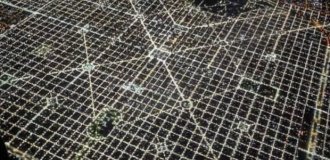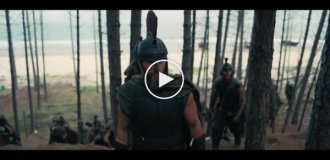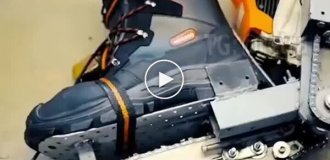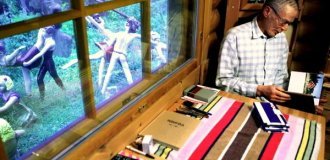Interesting and rare retro photos of Europe (21 photos)
Here are 20 colorized photographs that show what life was like in Europe during the 20th century. Let's dive into the lives of other countries and see how ordinary people lived and did what. 
A woman helps pull out fishing boats in Peniche, Portugal, 1950s.
A beautiful Portuguese girl pulls a very heavy anchor. I found a very large and interesting archive of black and white photographs online dedicated to fishing in Portugal, which I will gradually colorize and post here.
Fishing in Portugal dates back to the Roman Empire. Hundreds of species of sea fish live in the waters of Portugal, such as: tuna, sardine, swordfish, bass, sole, bream, anchovy, silver corvina, various species of sharks and others. 
Children on a ski lift. Switzerland, 1940s.
Modern parents have probably caught "Condratiy" now. Although children at all times seek out dangerous entertainment. 
Photographer: Leonard von Matt
Two fishermen in traditional baggy trousers and clogs are assisted by a young woman who carries two small buckets. Marken. The Netherlands, early 20th century.
The unusual footwear is called clogs - traditional Dutch wooden shoes that appeared about 800 years ago. They were mainly worn by the poor: fishermen and farmers. They were very simple to make and protected well from moisture and cold. In winter, the soles were lined with straw.
It is now one of the most popular and best-selling souvenirs in the Netherlands. 
Venice, 1960. 
Photographer: Gianni Berengo Gardin
Poverty. La Courneuve, a suburb of Paris, 1952.
The conditions, of course, are not very human... a barn, even though it is ours. But it is clean inside, the people are neatly dressed and there is even a vehicle. 
Photographer: Jean-Philippe Charbonnier.
Kifisia. Greece, 1920. 
Photographer: Frederic Boisson
Help has arrived. Broviken Bay, Sweden, 1955. 
Photographer: Rolf Olson
Transporting tires at the Renault plant. France, 1950.
The history of the Renault automobile plant began in 1899, when the brothers Louis, Marcel and Fernand founded the Renault Freres company in France. 
Photographer: Robert Doisneau
Paris, circa 1950. 
Photographer: Tore Johnson
The Arta Bridge is a stone arched bridge over the Araxos River in the Epirus town of Arta. Greece, early 20th century.
The total length of this stone bridge is 130 meters. It still stands today. 
Shoe sales in front of the Santa Barbara dei Librai church. Rome, late 1940s.
Italian shoemaking has established itself as one of the best in the world. And this quality has been maintained for many centuries. The photo most likely dates back to the post-war years. 
Advertisement for the Holborn 6100 personal computer, the Netherlands, 1981. The Holborn 6100 computer was produced for only 2 years and was not mass-produced. Although its design was very cool and unusual for its time. The brand name was actually an abbreviation of “Born in Holland”. 
A man and women with ducks on the street in Paris, circa 1950. 
Photographer: Tore Johnson
Women smoking pipes. Sør-Varanger, 1900–1910. 
Photographer: Ellisif Ranveig Wessel
Autobahn, West Germany, 1972.
The first autobahn in Germany opened on August 6, 1932 between Cologne and Bonn. There are now more than 120 expressways in the country. 
Photographer: Hans Malmberg
Portrait of fishermen with their catch in the Lofoten Islands, 1910.
Lofoten fishing is considered a traditional and culturally rich industry in Norway. For centuries, it has played an important role in both the local and national economy. Fishermen from all over the coast of Norway still come to Lofoten to fish. 
Photographer: Anders Beer Wilse
A bar in Paris, 1938.
A seedy place, to be sure, but what a colourful couple. 
Photographer: Emile Savitri
Paris, 1920s.
The large car is a Renault AG Paris taxi, produced by the French car manufacturer Renault from 1905 to 1910. Before the First World War, there were more than 10,000 of these taxis in Paris. 
A woman repairing a car. Budapest, 1971.
A brand of East German small cars, mass-produced by the national enterprise Sachsenring Automobilwerke. "Trabant" became one of the symbols of the GDR.
A staged photo, because there is nothing under the driver's seat of this car. 
Teenagers in front of the Acropolis. Athens, 1983. 






















